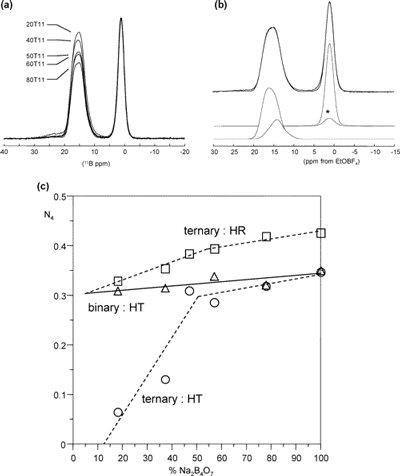Ask for a reprint
email :
* Give your email
2007
ACL
|
P.Florian, E.M.Anghel, C.Bessada, 'Structural description of the Na3AlF6-Na2B4O7-TiO2 system. Part II: A multinuclear approach', J. Phys. Chem. B 111 968-981 (2007) doi:10.1021/jp065201p
A quantitative structural investigation of pseudo-binary Na2B4O7-[Na3AlF6-TiO2]11 was carried out by NMR spectroscopy. We applied high-resolution solid-state NMR on quenched samples and in situ high-temperature NMR spectroscopy on molten compositions to obtain a more accurate description of the melts. Consistent with our previous findings, two compositional ranges can be evidenced. Below 50 mol % Na2B4O7, the TiIV TiVI valence conversion prevails, leading to the formation of B(O,F)3 species at the expense of B(O,F)4 ones and a low average coordination number of aluminum; above 50 mol %, the system behaves mainly like the binary Na2B4O7-Na3AlF6 where Na3AlF6 is playing a network former role. The dominant oxyfluoro-species evidenced by double-resonance NMR in the quenched samples are BO2F2, BO3F, BO2F, BOF2, NaO7F, NaO6F2, and AlO4F with sodium in various coordination states, Na(O,F)8, Na(O,F)7, and Na(O,F)6. F-Ti bonds were found to be almost negligible whereas F-Al2, F-B, F-Na, and F-Al-Na bonds were clearly observed in the solid state.
|

|